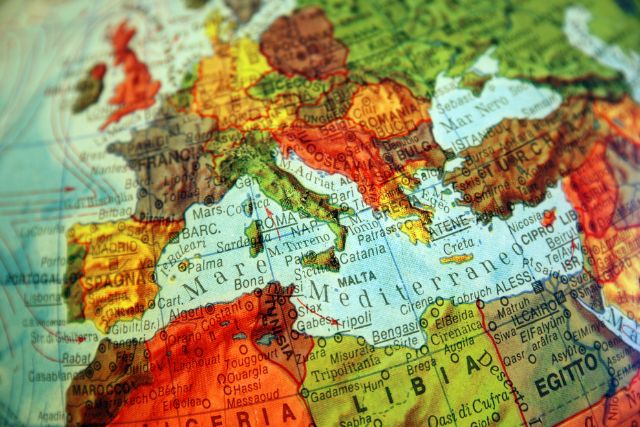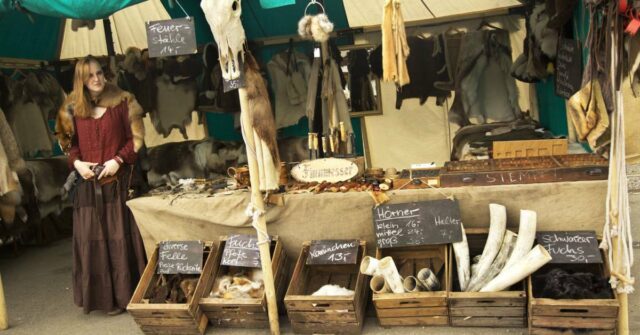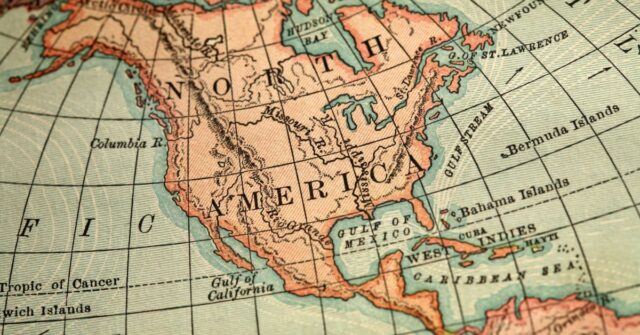When we think of Vikings, our minds drift to the icy fjords of Scandinavia, not the sun-soaked shores of the Mediterranean.
Yet, these intrepid Norsemen made their way far beyond their northern homes, leaving a mark on regions as distant as the Mediterranean.
This journey wasn’t just a leisurely sail; it was filled with thrilling encounters, fierce conflicts, and a cultural exchange that forever altered the course of history.
Let’s embark on a voyage to uncover the stories of Vikings in lands where olives, not just axes, flourish.
Introduction to the Viking Age
The Viking Age, a period stretching roughly from 793 to 1066 AD, was a time of significant transformation in Europe.
Vikings, known for their formidable seafaring skills, set out from Scandinavia, impacting far-reaching corners of the world.
But who were these adventurers at heart, and what drove them to explore beyond the horizon?
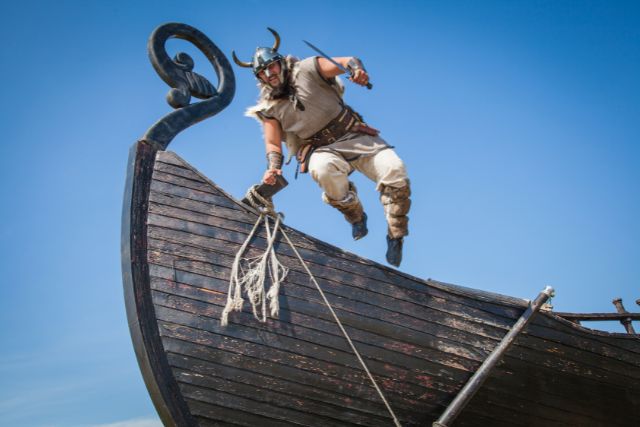

The Rise of Viking Exploration
Driven by a combination of overcrowding at home, the allure of wealth abroad, and sheer wanderlust, Vikings began to explore.
Their longships, marvels of the era, glided through rivers and across open seas, reaching lands unknown to them. The Mediterranean, with its rich cities, became an irresistible target for their raids and trades.
Viking Society and Culture
Viking society was complex, with a social structure that included everything from powerful jarls (nobles) to thralls (slaves).
At its core, though, was a community that valued bravery, honor, and the sagas—stories of gods, heroes, and monsters, which perhaps inspired their own ventures into the unknown.
The Extent of Viking Voyages
The reach of Viking voyages was astonishing. From the icy shores of Greenland to the warm waters of the Mediterranean, their journeys were not just for plunder.
Trade, settlement and even service as mercenaries were part of their ventures, demonstrating a versatility and adaptability that often goes unrecognized.
The Vikings’ Journey to the Mediterranean
Imagine a Viking longship, its dragon-head prow slicing through the Mediterranean waves, a sight both awe-inspiring and terrifying to behold.
This was no myth; the Vikings truly made their presence known in the Mediterranean, navigating through its challenges with a combination of audacity and skill.
Navigational Techniques and Ship Design
The Vikings’ ability to navigate vast seas with rudimentary instruments is a testament to their skills.
Using the sun’s position, the stars, and the color of the ocean, they charted courses that led them to the Mediterranean’s rich ports, showcasing an impressive understanding of the natural world.
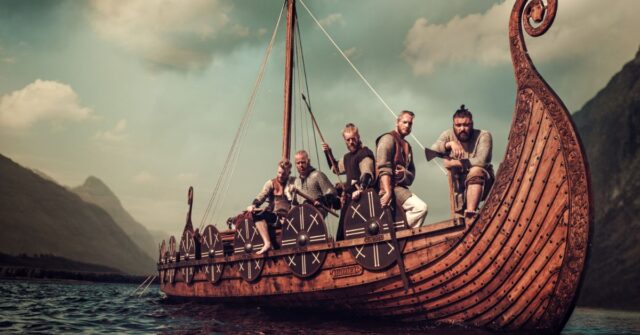

Key Figures and Expeditions
Figures like Bjorn Ironside and Hastein left their mark on the Mediterranean through daring raids.
Their exploits, some successful, others less so, are the stuff of legend, illustrating the audacity of Viking leaders in pursuit of glory and riches.
The Role of Trade and Raiding
The Vikings were not mere marauders; they were also shrewd traders.
Their interactions in the Mediterranean were a complex tapestry of raiding and trading, showcasing a pragmatic approach to new lands.
They traded goods such as furs, timber, and slaves for silver, spices, and silk, weaving the Norse into the economic fabric of the Mediterranean.
Vikings in the Iberian Peninsula
The Iberian Peninsula, a land of Christians and Muslims, experienced the Viking impact firsthand. These encounters were marked by raids but also by less-known, yet significant, interactions.
Early Raids and Encounters
Vikings first raided the Iberian Peninsula in the early 9th century, their longships appearing like phantoms along the coast.
Cities such as Seville felt the Vikings’ wrath, yet these raids also opened unforeseen pathways to diplomacy and exchange.
Interactions with Muslim and Christian States
The Vikings’ presence led to interactions with both Muslim and Christian rulers.
From confrontations to alliances, these relationships were as dynamic as the Mediterranean tides, influencing political and economic landscapes.
Legacy in the Region
The Viking legacy in Iberia is a tapestry of conflict and coexistence.
Their raids are remembered in lore and history, but so too are their contributions to trade and cultural exchange, a testament to the complex nature of Viking encounters in the region.
The Siege of Sicily and Southern Italy
Sicily and Southern Italy, with their strategic positions in the Mediterranean, drew the Vikings like moths to a flame.
Here, they weren’t just raiders but also mercenaries, playing pivotal roles in the power struggles of the region.
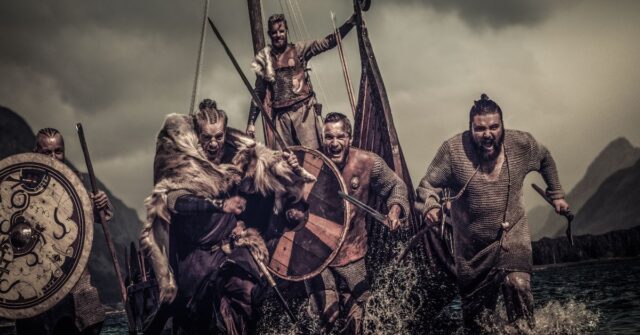

The Strategic Importance of Sicily
Sicily, a jewel in the Mediterranean, was coveted for its position and wealth. Vikings, recognizing its value, engaged in both raids and political machinations, leaving a lasting impact on its history.
Major Battles and Sieges
The siege of Sicily saw Vikings become key players in the island’s defense and conquests. Their martial prowess was a double-edged sword, wielded by and against various rulers, shaping the fate of the region.
Viking Mercenaries in Local Conflicts
As mercenaries, Vikings were unmatched. Their services were sought after by princes and kings, eager to utilize their skills in their quests for power.
This role highlights the Vikings’ adaptability and the diverse nature of their engagements in the Mediterranean.
Vikings and the Byzantine Empire
The relationship between the Vikings and the Byzantine Empire is a saga of intrigue, warfare, and diplomacy.
From feared raiders to respected members of the Varangian Guard, the Vikings’ role in Byzantium was multifaceted.
The Varangian Guard: From Raiders to Elite Guards
The Varangian Guard, composed of Norse warriors, served as the personal bodyguards of the Byzantine Emperors.
This transition from raiders to elite guards is a remarkable chapter in Viking history, showcasing their integration into the heart of Byzantine power.
Political Intrigue and Power Plays
Vikings were deeply involved in the Byzantine world of intrigue and politics.
Their prowess and loyalty made them valuable players in the empire’s complex power struggles, a role they embraced with the same zeal they applied to raiding and exploring.
Trade and Diplomacy
Trade routes between the Norse world and Byzantium flourished, facilitated by the Vikings’ roles within the empire.
Diplomatic marriages and treaties further strengthened these connections, highlighting a sophisticated understanding of politics and commerce.
Encounters with the Arab World
The Viking forays into the Arab world are less celebrated but equally fascinating.
These encounters were marked by both conflict and cooperation, revealing a rich tapestry of interaction that extended across cultural and religious divides.
Trade Networks and Cultural Exchanges
The Vikings engaged in trade with the Islamic world, exchanging goods from the North for luxuries like silver, spices, and silk.
These interactions were not just commercial but also cultural, with artifacts and ideas flowing between the two worlds.
Raids and Military Engagements
While trade was significant, raids into Muslim territories did occur.
However, these were not the one-sided affairs often depicted. They prompted responses, leading to military engagements that tested the mettle of Viking warriors against their Muslim counterparts.
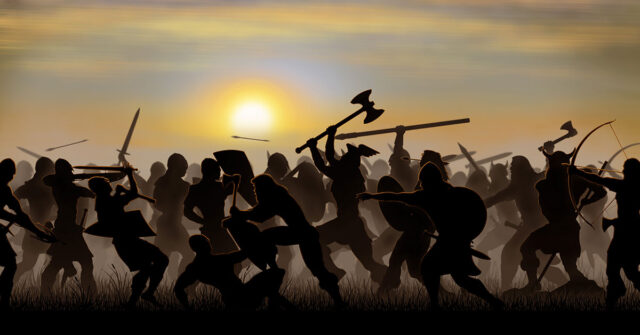

The Impact on the Mediterranean Balance of Power
The Viking presence in the Mediterranean was a factor in the region’s complex balance of power.
Through raiding, trading, and serving as mercenaries, Vikings influenced the political landscape, demonstrating their significance far beyond the northern seas.
Religious Interactions and Exchanges
The religious landscape of the Mediterranean was a mosaic of beliefs, a scenario that did not deter the Vikings. Instead, it presented opportunities for exchange, conversion, and sometimes, conflict.
Conversion Efforts and Resistance
Christianity made inroads into Viking communities, particularly those that settled in the Mediterranean. This transformation was not always smooth, with resistance from those who clung to the old gods.
Yet, over time, a blending of beliefs and practices occurred, enriching both Viking and local religious traditions.
Interfaith Relations and Coexistence
Interfaith coexistence was a reality for Vikings in the Mediterranean.
In lands where Christians, Muslims, and Jews lived side by side, Vikings navigated these diverse religious landscapes with pragmatism, often adopting a tolerant stance that facilitated their trade and military endeavors.
Religious Influence on Art and Architecture
The mingling of cultures and religions in the Mediterranean left its mark on Viking art and architecture.
Influences from Christian, Muslim, and Byzantine traditions can be seen in Viking works, a testament to the rich cultural exchange that took place.
The End of Viking Presence in the Mediterranean
As all sagas come to an end, so did the Viking era in the Mediterranean. The factors leading to their decline were as complex as the journeys that brought them there.
Yet, the legacy of their presence continues to echo through history and archaeology.
Factors Leading to the Decline
Changes in European power dynamics, advancements in navigation that opened new trade routes, and the integration of Viking settlers into local populations contributed to the fading of Viking influence in the Mediterranean.
Their era ended not with a dramatic finale but a gradual assimilation into the tapestries of local cultures.
The Lasting Legacy of Vikings in the Region
The Vikings’ legacy in the Mediterranean is a testament to their adaptability and impact.
From the Varangian Guard to the genetic imprints left in Sicily and beyond, their story is a reminder of the interconnectedness of our world.
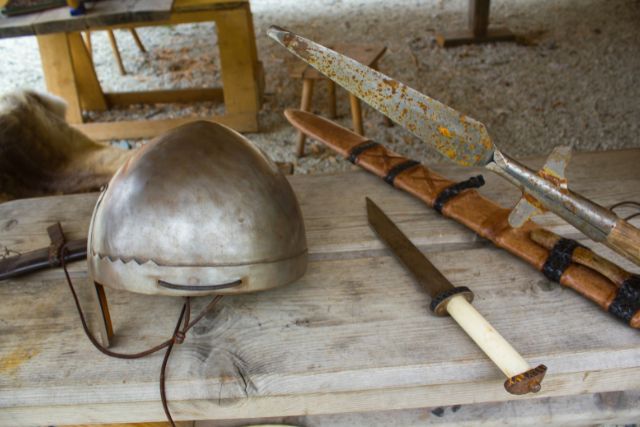

Archaeological Evidence and Recent Discoveries
Recent archaeological findings continue to shed light on the Viking presence in the Mediterranean.
Shipwrecks, artifacts, and even genetic studies offer glimpses into their lives, ensuring that the saga of the Vikings in the Mediterranean remains a vibrant chapter in the annals of history.
Conclusion: Reevaluating Viking Legacy
The story of Vikings in the Mediterranean challenges our stereotypes and invites us to reconsider their legacy.
Far from being mere raiders, they were explorers, traders, and integral players in the medieval world. Their saga, filled with adventures, conflicts, and cultural exchanges, enriches our understanding of history.
As we uncover more about their journeys, we’re reminded that the Viking spirit of exploration and resilience continues to inspire, proving that history is not just about the past but a beacon guiding us toward a future filled with possibilities.

